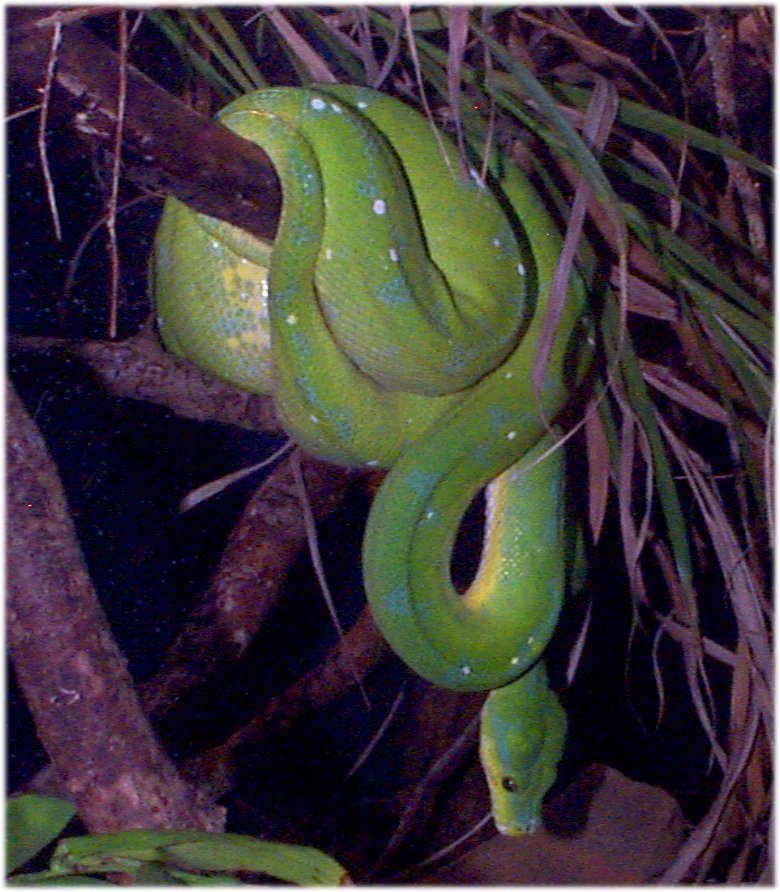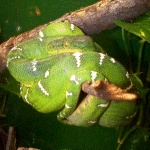| Source list:
Bardack, D. "Tales
of Giant Snakes: A Historical Natural History of Anacondas and Pythons".
Choice
35(7):1217 1998 March.
Bartlett, Patricia.
Ernie Wagner. Pythons. Hauppauge: Barron's Educational
Series., 1997.
Cannon, Janell. Verdi.
San Diago: Garcourt Brace & Co. 1997.
Griehl, Klaus.
Snakes. Hauppauge: Barron's Educational Series, Inc., 1982.
Leetz, Thomas. Snakes...
As a Hobby. Neptune City: T. F. H. Publications, Inc.,
1991.
Stoops, Erik D. Annette
T. Wright. Boas & Pythons Breeding & Care. Neptune
City T. F. H. Publications, Inc., 1993.
University of Michigan
Green
Tree Python |


